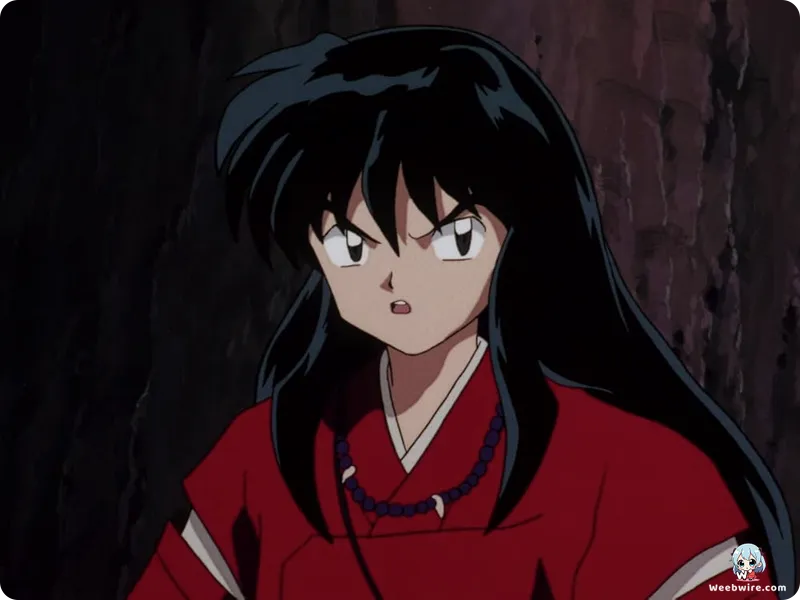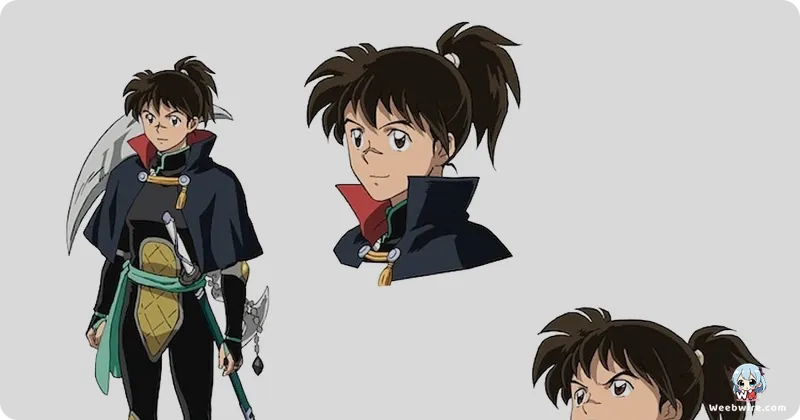InuYasha: Unveiling the Untold Stories Behind a Timeless Anime Phenomenon

For over two decades, Rumiko Takahashi's magnum opus, InuYasha, has enthralled a global audience with its captivating blend of romance, action, and fantasy. While the epic quest of the half-demon InuYasha and the spirited modern-day schoolgirl Kagome to reassemble the shattered Shikon Jewel is widely known, a trove of fascinating insights lies beneath the surface delving into its intricate creation, character nuances, and intriguing behind-the-scenes revelations. Even the most dedicated fans might discover overlooked details that illuminate this beloved anime classic, from its meticulous world-building to its profound cultural impact.
Rumiko Takahashi's Creative Evolution
A pivotal aspect of InuYasha's genesis is its creator, Rumiko Takahashi. Renowned for her comedic, slice-of-life narratives imbued with romantic entanglements, such as Urusei Yatsura and Ranma ½, InuYasha marked a significant thematic departure. While it retains Takahashi's signature humor and heartfelt romance, it plunges into a darker, more expansive fantasy epic, characterized by intense battles, poignant backstories, and a sprawling narrative arc. This evolution showcased her remarkable versatility, proving her mastery in navigating both lighthearted comedy and profound drama within a rich fantasy setting. InuYasha's monumental success cemented her status as a manga legend, affirming her capacity to refine her craft and engage an even broader demographic while preserving her distinctive artistic voice.
The Significance of Character Names
The very names of the characters often conceal deeper meanings or intriguing etymological roots. 'InuYasha' translates directly to 'Dog Demon,' a fitting yet straightforward descriptor for the titular protagonist. 'Kagome,' however, offers a more poetic resonance; it references a traditional Japanese woven basket pattern and is famously linked to a children's game song, 'Kagome Kagome.' This subtly foreshadows her role as the 'basket' safeguarding the fragmented Shikon Jewel, and perhaps her 'caged' destiny intertwined with the feudal past. Sesshomaru, InuYasha's aloof elder brother, bears a name interpretable as 'Killing Perfection' ('Sessho' meaning killing, 'Maru' a common male name suffix), perfectly embodying his initial cold, ruthless, and formidable persona. Even the endearing fox demon Shippo’s name, meaning 'Seven Treasures,' hints at his intrinsic value and the invaluable lessons he accumulates throughout his journey.
Voice Acting Connections Across Takahashi's Works
The art of voice acting breathes unparalleled life into characters, and InuYasha is a prime example. A delightful revelation for long-time admirers of Rumiko Takahashi's earlier works is the notable cross-over in Japanese voice talent. Kappei Yamaguchi, the iconic voice behind InuYasha, also lent his vocal prowess to Ranma Saotome in Ranma ½. This connection fosters a charming sense of continuity for Takahashi aficionados, highlighting Yamaguchi’s extraordinary range in portraying two distinct yet equally cherished protagonists. Mirroring this, Richard Ian Cox, the English voice actor for InuYasha, similarly voiced Ranma in the English dub of Ranma ½, establishing a parallel across linguistic barriers. These shared roles stand as a testament to the actors’ capabilities and the singular qualities inherent in Takahashi's heroic archetypes.
The Lore and Evolution of Tetsusaiga
InuYasha's legendary blade, Tetsusaiga, transcends mere weapon status to become a character in its own right, boasting a rich lore and evolving capabilities. Initially, its true might was accessible only to InuYasha, protected by a paternal barrier designed to prevent full demons from wielding it a detail underscoring InuYasha's half-demon heritage as both a vulnerability and a unique asset. Throughout the saga, Tetsusaiga undergoes multiple transformations, acquiring formidable new powers such as the devastating Wind Scar, the diamond-shard-projecting Adamant Barrage, and the dimension-slicing Meido Zangetsuha. Each new ability is not simply bestowed; InuYasha must earn it through arduous training, profound self-discovery, and the conquest of personal limitations, intrinsically linking his personal growth to the sword’s continuous evolution.

Sesshomaru's Enduring Popularity
Another compelling facet of the series is the enduring adoration for Sesshomaru. Despite his debut as a cold, malevolent antagonist who frequently sought InuYasha's demise, Sesshomaru gradually transformed into one of the most beloved figures. His stoic demeanor, immense power, and eventual, albeit subtle, acts of compassion particularly towards the orphaned human girl Rin captivated a vast fanbase. His character arc, evolving from a villain solely driven by power to a complex individual capable of profound protectiveness and even a form of familial affection, exemplifies masterful antagonist development. This metamorphosis, achieved without ever compromising his inherent pride or formidable strength, cemented his status as a compelling character who transcended conventional villain tropes.
Anime Adaptation and 'The Final Act'
The anime adaptation by Studio Sunrise, while largely faithful to its manga source, incorporated a notable amount of original 'filler' content, particularly in its inaugural seasons. While some viewers appreciated the extended adventures, others felt it impacted the narrative pacing compared to the manga. Acknowledging this feedback, the subsequent series, InuYasha: The Final Act, was specifically conceived to adapt the remaining manga chapters more directly and expeditiously, delivering the conclusive ending that many fans had eagerly anticipated for years. This strategic decision enabled the anime to honor Takahashi's complete narrative in a more streamlined fashion, bringing the epic journey to its rightful conclusion.
InuYasha's Cultural Footprint
InuYasha's cultural footprint is undeniably significant. It served as an accessible entry point for countless Western audiences into the rich tapestry of Japanese feudal history, intricate mythology, and spiritual philosophies. From the diverse yokai (demons/spirits) like kitsune (foxes) and oni (ogres) to the subtleties of Shinto and Buddhist beliefs, the series unveiled a fascinating cultural landscape. The humorous interplay between Kagome's modern sensibilities and the ancient Sengoku period simultaneously highlighted the timeless nature of human emotions and struggles. The series' remarkable ability to seamlessly weave action, humor, romance, and deep emotional resonance, all while exploring complex themes of prejudice, destiny, and redemption, solidified its place as an enduring classic in the anime pantheon. Years after its final chapter, InuYasha continues to captivate new generations, a testament to its compelling storytelling and unforgettable cast of characters.
Credits
InuYasha
Author
Rumiko Takahashi
Cover Art
Rumiko Takahashi
Studio
Sunrise
Publisher
Shogakukan
Producers





